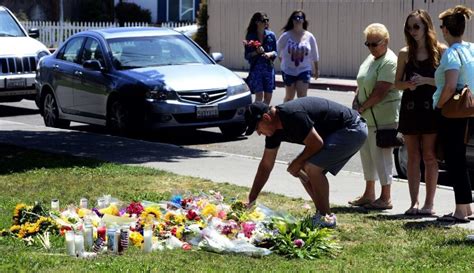The Isla Vista killer, Elliot Rodger, carried out a devastating attack on May 23, 2014, in Isla Vista, California, leaving six innocent people dead and 14 others injured. The tragedy sent shockwaves across the nation, sparking intense debates about mental health, gun control, and the societal pressures that may contribute to such heinous acts. To understand the complexities of this case, it’s essential to delve into the facts surrounding Elliot Rodger’s life, his motivations, and the events leading up to the horrific attack.
Early Life and Mental Health
Elliot Rodger was born on July 24, 1991, in London, England, to Peter Rodger, a British filmmaker, and Lichi Chan, a Malaysian-born researcher. His family moved to the United States when he was young, settling in California. Rodger’s early life was marked by struggles with social interactions and feelings of isolation. He was diagnosed with high-functioning autism and experienced significant difficulties in forming friendships or romantic relationships. His parents sought various forms of therapy for him, including counseling and psychiatric treatment, indicating an awareness of his mental health challenges.
The Manifesto and Online Presence
One of the most disturbing aspects of the Isla Vista case is the 141-page manifesto that Elliot Rodger wrote and posted online shortly before the attack. The document, titled “My Twisted World: The Story of Elliot Rodger,” provides a detailed account of his life, from his childhood to the planning of the massacre. It includes his feelings of inadequacy, anger towards women for rejecting him, and a deep sense of entitlement. Rodger also maintained a YouTube channel where he posted several videos, some of which expressed his resentment towards women and the happiness of others. These online activities gave a glimpse into his increasingly unstable mental state and his adoption of misogynistic ideologies that justified violence against women.
The Attack
On the evening of May 23, 2014, Elliot Rodger began his attack by stabbing three men to death in his apartment: Cheng Yuan Hong, 20, and George Chen, 19, were his roommates, and Weihan Wang, 20, was a friend visiting from China. He then drove to the Alpha Phi sorority house near the University of California, Santa Barbara (UCSB), intending to kill the women there. However, after no one answered the door, he shot three women nearby: Katherine Cooper, 22, Veronika Weiss, 19, and her friend, who survived. Rodger continued his rampage, driving through Isla Vista and shooting at pedestrians and into a deli, killing Christopher Ross Michaels-Martinez, 20. Eventually, he was found dead in his car after crashing, with a self-inflicted gunshot wound to the head.
Aftermath and Debate
The Isla Vista killings sparked a national conversation about gun control, mental health care, and the portrayal of women in media. The #YesAllWomen campaign emerged on social media, discussing sexism, misogyny, and the violence women face. There were also debates about the warning signs that were potentially missed and how society can better address the complex issues of mental health, social isolation, and the glorification of violence.
Prevention and Understanding
A critical aspect of preventing such tragedies is understanding the interplay of factors that contribute to them. This includes addressing issues like access to firearms, improving mental health services, and fostering a culture that promotes healthy relationships and respects the dignity of all individuals. Additionally, there’s a growing recognition of the need for early intervention and support for those struggling with social isolation and mental health challenges.
Conclusion
The Isla Vista tragedy is a complex and multifaceted case that challenges easy explanations or solutions. By examining the facts and the deeper issues at play, society can work towards creating a safer, more compassionate environment. This involves not only legislative changes and policy reforms but also a shift in cultural attitudes towards mental health, gender, and community.
FAQ Section
What were the motivations behind Elliot Rodger’s attack?
+Elliot Rodger’s motivations as outlined in his manifesto included a deep-seated anger towards women for what he perceived as their rejection of him, a sense of entitlement, and a belief in misogynistic ideologies that justified violence against women.
How did Elliot Rodger’s mental health play a role in the attack?
+Elliot Rodger struggled with high-functioning autism and experienced significant social isolation and difficulties in forming relationships. His mental health challenges, coupled with his adoption of misogynistic beliefs, contributed to the planning and execution of the attack.
What were the societal responses to the Isla Vista killings?
+The attack prompted widespread discussions about gun control, mental health care, and the portrayal of women in media. The #YesAllWomen social media campaign was a notable response, highlighting experiences of sexism, misogyny, and violence faced by women.
How can such tragedies be prevented in the future?
+Prevention involves a multi-faceted approach, including improving access to mental health services, addressing the glorification of violence and misogyny, fostering a culture of respect and inclusivity, and implementing policies that reduce access to firearms for those who may pose a risk to themselves or others.



